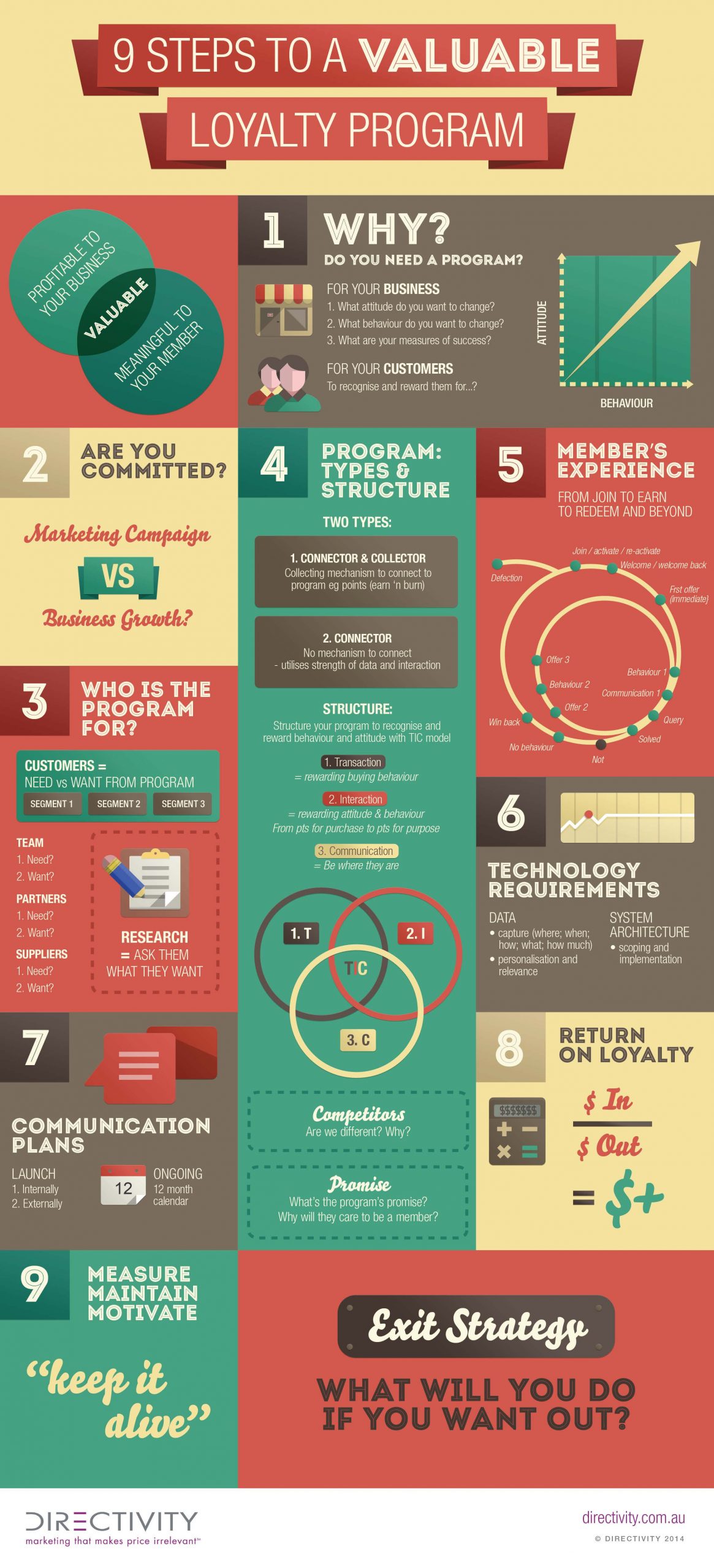If you are considering the value of developing a loyalty program or even if you already have one, then each of the steps of our framework ‘9 steps to a valuable loyalty program’ will help you.
A program must start with the view that there is a sensitive balance between it being:
1. Profitable to your business
2. Meaningful to your members
Our 9-step process helps to get that balance, so let’s go through them briefly:
Step 1: Why? There are 3 dimensions to ‘why’
• The first ‘why’ is to gain leadership alignment on the reasons for a program based on our diagnostic ‘Do you really need a loyalty program?’
• The second ‘why’ is to create a vision for your program.
• The third ‘why’ are your SMART objectives? Incremental revenue and increased frequency of purchase are the most common. There are many others including developing a direct relationship with end consumers (if you don’t currently), increasing retention rate and building advocacy.
Step 2: Commitment: Is this a marketing initiative or business growth strategy?
• Whatever form or function your program takes, it is there to grow the business profitably and strengthen the interaction you have with your customers, so commitment is critical.
Step 3: Who is the program for? All customers or specific segments?
• Knowing who your customers are based on demography, psychographics and buying behavior is the basis for segmentation. Which segment is the program for?
• Your team is critical and their input and commitment to a program is a key ingredient to success.
• Partners and suppliers are also part of the program’s success, so their involvement should be considered.
Step 4: Program structure:
• From our experience and ongoing research there are many kinds of program structures.
• Developing the right kind of program for your business and customer is where the secret of success comes from.
• You need to ensure there is a balance of transactional benefits, interaction and exclusive benefits and communication benefits.
• We have identified 24 ingredients to a successful program in our benchmark research ‘for love or money 2016’.
Step 5: Member experience: From onboarding to ongoing:
• This is linked to the technology (step 6) and is about mapping the member’s engagement with your program across all channel interactions.
• The kind of program that is formulated in step 4, will impact on the experience across all channels.
Step 6: Technology requirements, CRM and marketing automation:
• This is impacted by the type loyalty program structure.
• Data scoping and insights reporting requirements are also part of this step as technology must enable simple data extraction, analysis and insight reporting – a key success factor.
Step 7: Communication plans:
• All loyalty programs require a mapped out communications plan (mandatory, marketing planned and member behaviour triggered) which again links into the technology platform.
• This takes into account a pre-launch, launch and post-launch program, plus ongoing communications.
Step 8: Return on Loyalty = return on investment:
• Determine the financial return to the investment you make in the program.
• This is critical for justifying the value and long-term viability of the program.
Step 9: Keep it alive: Measure, maintain and motivate
• Once the program is launched, keeping it alive for the long-term requires ongoing maintenance, measurement & reporting and motivation all audiences.
Exit strategy:
• What will you do if you decide to close the program? Strange yet true, as we are finding more and more often that brands are either changing or closing their programs with impact on their brands. We have experience in this and discussing an exit strategy is very important.
That’s the summary (phew!!).
Have a happy loyalty day


